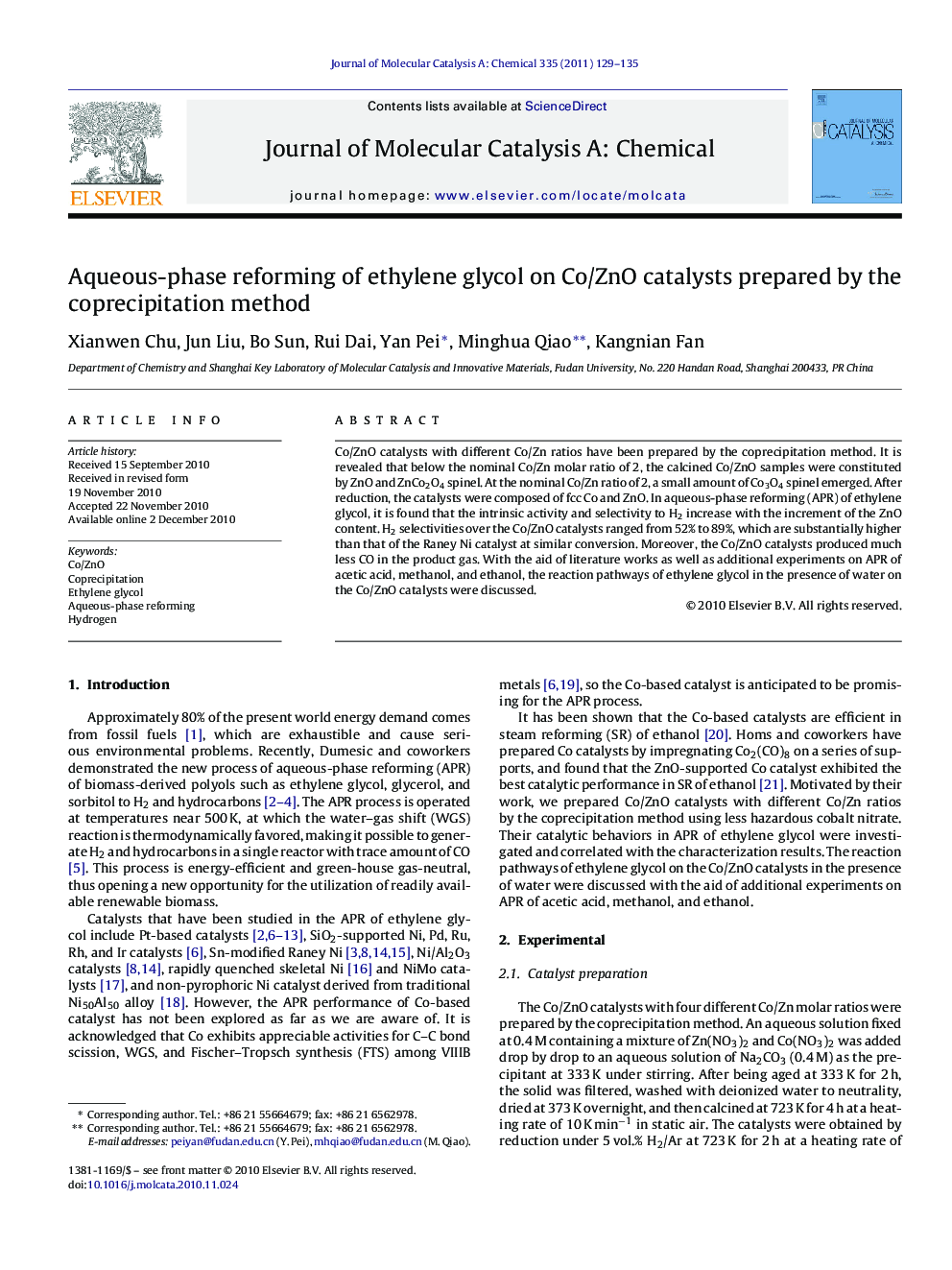| Article ID | Journal | Published Year | Pages | File Type |
|---|---|---|---|---|
| 66574 | Journal of Molecular Catalysis A: Chemical | 2011 | 7 Pages |
Co/ZnO catalysts with different Co/Zn ratios have been prepared by the coprecipitation method. It is revealed that below the nominal Co/Zn molar ratio of 2, the calcined Co/ZnO samples were constituted by ZnO and ZnCo2O4 spinel. At the nominal Co/Zn ratio of 2, a small amount of Co3O4 spinel emerged. After reduction, the catalysts were composed of fcc Co and ZnO. In aqueous-phase reforming (APR) of ethylene glycol, it is found that the intrinsic activity and selectivity to H2 increase with the increment of the ZnO content. H2 selectivities over the Co/ZnO catalysts ranged from 52% to 89%, which are substantially higher than that of the Raney Ni catalyst at similar conversion. Moreover, the Co/ZnO catalysts produced much less CO in the product gas. With the aid of literature works as well as additional experiments on APR of acetic acid, methanol, and ethanol, the reaction pathways of ethylene glycol in the presence of water on the Co/ZnO catalysts were discussed.
Graphical abstractFigure optionsDownload full-size imageDownload high-quality image (100 K)Download as PowerPoint slideResearch highlights▶ Co/ZnO catalysts were prepared by the coprecipitation method. ▶ They exhibit high intrinsic activity and H2 selectivity in APR of ethylene glycol. ▶ The reaction pathways are discussed.
